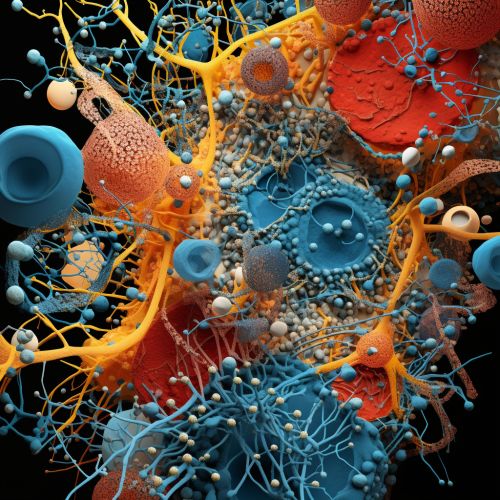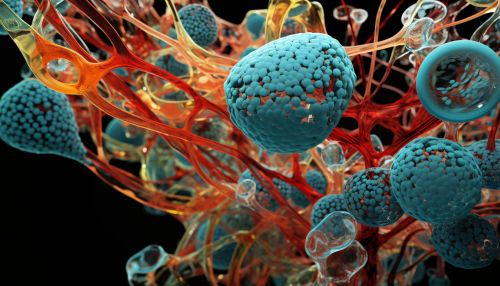Metabolic pathway
Introduction
Metabolic pathways are a series of chemical reactions that occur within a cell. In a metabolic pathway, the product of one enzyme acts as the substrate for the next. These reactions are organized into metabolic pathways, each of which increases the product's complexity, modifies it, or breaks it down. Metabolic pathways are essential for maintaining the cell's energy balance.


Types of Metabolic Pathways
There are two main types of metabolic pathways: catabolic and anabolic.
Catabolic Pathways
Catabolic pathways involve the breakdown of complex molecules into simpler ones, releasing energy in the process. This energy is used to fuel important cellular processes. Examples of catabolic pathways include glycolysis, the citric acid cycle, and beta-oxidation.
Anabolic Pathways
Anabolic pathways, on the other hand, use energy to construct complex molecules from simpler ones. These pathways are involved in processes such as the synthesis of proteins from amino acids, the synthesis of lipids, and the synthesis of nucleotides for DNA and RNA.
Regulation of Metabolic Pathways
The regulation of metabolic pathways is crucial for maintaining the cell's energy balance. This regulation is achieved through several mechanisms, including allosteric regulation, covalent modification, and gene regulation.
Allosteric Regulation
In allosteric regulation, a molecule binds to an enzyme at a site other than the active site. This binding changes the enzyme's shape and either enhances or inhibits its activity.
Covalent Modification
Covalent modification involves the addition or removal of a chemical group (such as a phosphate group) from an enzyme. This modification can either activate or deactivate the enzyme.
Gene Regulation
Gene regulation involves the increase or decrease in the production of specific enzymes by the cell. This regulation is often a response to changes in the cell's environment.
Role of Metabolic Pathways in Disease
Abnormalities in metabolic pathways can lead to disease. For example, defects in the metabolic pathways involved in processing sugars, fats, or proteins can lead to metabolic disorders such as diabetes, obesity, and phenylketonuria. Understanding these pathways and their regulation can help in the development of treatments for these diseases.
Conclusion
Metabolic pathways are an essential aspect of cellular function, providing the energy needed for various cellular processes and the building blocks for cellular components. Understanding these pathways and their regulation is crucial for understanding cellular function and disease.
